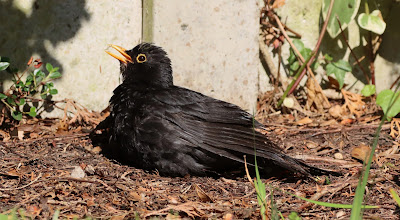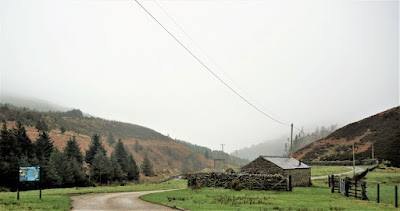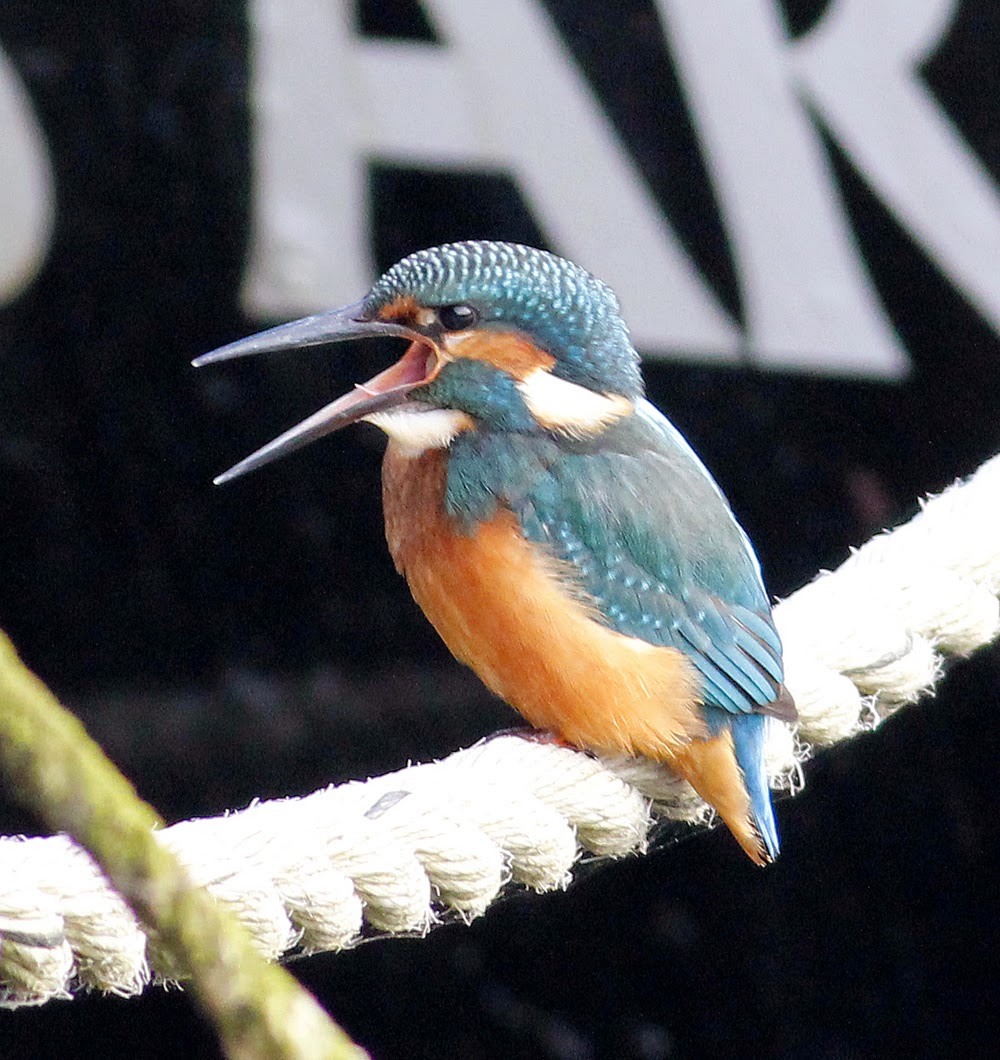Blackbirds took every single cherry in garden and didn’t bother waiting until the fruit was red ripe. And then they came back for the next tree along, the rowan berries just turning from green to orange, nowhere near the final glossy red that completes a winter landscape.
Blackbird
Thursday evening was warm and sunny in our sheltered back garden. I watched a male Blackbird drop down from the rowan tree into a dried up patch below where thirsty berry trees had made for a dusty piece of ground.
The Blackbird spread its wings and tail, opened its bill and settled down into the dusty ground and began to sunbathe and perhaps to also “ant”. I have seen this behaviour on a number of occasions from different species of birds and this time managed to both observe and to photograph the activity.
Blackbird
Blackbird
Blackbird
Birds in various climates all around the world indulge in sunning. This can be anything from simply standing with their backs to the sun, with feathers rustled up to expose the skin below, to a full sunbathing posture with wings and tail feathers spread out to maximize the area open to the sun.
Obviously, in many cases the birds get warmth from the sun, which reduces the amount of metabolic energy they have to expend in order to maintain a constant body temperature of around 40 degrees C. However, some birds sunbathe in spots which can be quite hot. In such circumstances, sunbathing appears to leave them over-heated as they can be seen panting.
From Wiki - “Anting is a maintenance behavior during which birds rub insects, usually ants, on their feathers and skin. The bird may pick up the insects in its bill and rub them on the body (active anting), or the bird may lie in an area of high density of the insects and perform dust bathing-like movements (passive anting). The insects secrete liquids containing chemicals such as formic acid, which can act as an insecticide, miticide, fungicide, or bactericide. Alternatively, anting could make the insects edible by removing the distasteful acid, or, possibly supplement the bird's own preen oil. Instead of ants, birds can also use millipedes. More than 200 species of bird are known to ant " .
This week has been quite windy with no chance of a ringing session. During Thursday a quick runaround a local patch resulted in a few expected birds and a Green Sandpiper. Green Sandpiper is a shy species, one of the earlier returning migrant waders and can be seen in a variety of muddy margined places like ditches, farm middens and similarly secluded locations. For these early returnees from north and east it is autumn, even though for us in England it is still summer.
The same stream held 3 Little Egrets, a Grey Heron and 2 Redshanks.
The waterside margins seemed quiet except for a couple of Sedge Warblers and a single Reed Bunting both of which have been in their same spots for weeks now without any sign of having youngsters out of nests. Not so the pair of Moorhens with 5 youngsters in tow and probably their second brood by now mid-July.
I recently heard that the dry spring and lack of moisture of 2023 has not been good for egg production or breeding success of both Barn Owls and Kestrels. Whether this is the same for other bird species we do not know: it is a subject for research probably beyond the average birder, me included. My own observations at least are that local Swallows have had a better year, and not before time. There was a single youngster on a gate, waiting for a parent to arrive with food.
I called at our Sand Martin colony to see 100+ Sand Martins still around, despite the quarry face suffering from a degree of natural erosion, a combination of the Sand Martins’ own constant toing & froing combined with the vagaries of weather. The gulley left of centre formed by water run-off from above is a concern for the remainder of this year and next year when the martins return from their winter in Africa. Imagine having to move home every 12 months!
Friday morning. Rain arrived bang on the XC Weather forecast of 1000. The decision to leave the Sand Martins for another day was the correct one.
Join Another Bird Blog soon to find out what happened next.
Linking this weekend to Eileen's Anniversary Blog.











































































